PINO DONAGGIO THEME FROM 'BLOW OUT' SCORES FLASHBACK INTRO TO LAST NIGHT'S EPISODE
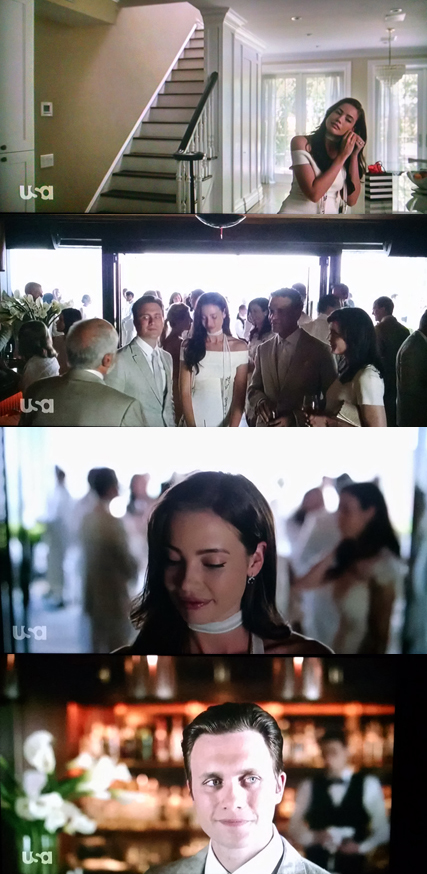 Last night's episode of USA's Mr. Robot (season 2, episode 7, "eps2.5h4ndshake.sme"), which was directed by the show's creator, Sam Esmail, opened with a flashback set to Pino Donaggio's theme from Brian De Palma's Blow Out. The theme is the first significant sound heard in the episode (after a couple of footsteps), runs over the opening title and beginning of the credits, and includes a direct homage to De Palma's Carrie, a film which was also scored by Donaggio.
Last night's episode of USA's Mr. Robot (season 2, episode 7, "eps2.5h4ndshake.sme"), which was directed by the show's creator, Sam Esmail, opened with a flashback set to Pino Donaggio's theme from Brian De Palma's Blow Out. The theme is the first significant sound heard in the episode (after a couple of footsteps), runs over the opening title and beginning of the credits, and includes a direct homage to De Palma's Carrie, a film which was also scored by Donaggio.The episode opens with a hint of the way Donaggio's music brings us into Kate Miller's world in the first part of De Palma's Dressed To Kill. The Blow Out theme, lush and melancholic, is accompanied by a camera (us, the viewer, a.k.a. Elliot's "friend") consistently pushing in toward Joanna Wellick, the wife of Tyrell Wellick, a character we are so far led to believe is no longer alive. The flashback is centered on a gift, earrings, that Tyrell had given to Joanna just before a social gathering. As the camera gets closer to Joanna, and Donaggio's music offers sad reflection, Tyrell appears, and even when the scene shifts to the gathering (which includes the woman Tyrell murdered last season, leaving us without a doubt that we're in a flashback), the movement keeps moving from wide shot and, with help of a dissolve, into Joanna's face, seemingly moved by the earrings, the camera eventually providing the viewer a close-up view of an earring in Joanna's ear which, via a match-cut, takes us out of pre-Tyrell's disappearance and into a more present-day, post-Tyrell flashback, where Joanna is tending to her baby in a stroller on the street.
Donaggio's theme here enters into its sparse piano portion (the part that Tarantino used for a tender texting moment in Death Proof), as the episode's opening credits also begin. An older woman is walking by, and Joanna smiles at her, but the woman turns out to be one of the many angry members of society walking around the city in the wake the E Corp hack. Targeting Joanna (and while we as viewer are still focused on the fact that she is wearing the expensive earring gift), the woman suddenly throws a bucket of what appears to be red paint onto Joanna, while shouting, "Capitalist pig!" The use of the word pig, a bucket, and the color red (whether actual pig's blood or red paint) mark the moment as an overt homage to De Palma's Carrie, as does the way Joanna then begins to scream out at the world while splattered in red, yet we can't hear her screams, only the quiet piano of Donaggio's theme from Blow Out, as the title "Mr. Robot" starkly appears overlayed upon Joanna's rage.
As Donaggio's theme trails off to its poignant final notes, the scene shifts once again into present day, as Joanna is now gazing upon a new gift set on top of her kitchen counter: a framed ultrasound sonogram of the baby she and Tyrell created. Joanna has been receiving gifts that seemingly come from Tyrell, who may be dead, and as the camera looks up from the countertop to Joanna sipping on a glass of wine as she looks down at the gift, we hear Elliot's voice ("I see you"), and for a moment, juxtaposed against Joanna's face, we sense that Elliot has been sending the gifts, and perhaps watching Joanna, until we realize Elliot is addressing us, his "friend," the viewer. Or is he...?
In any case, it is a brilliantly-conceived opening sequence by Sam Esmail. Looking forward to seeing how it all fits in once we know the truth about everything that is actually going on.
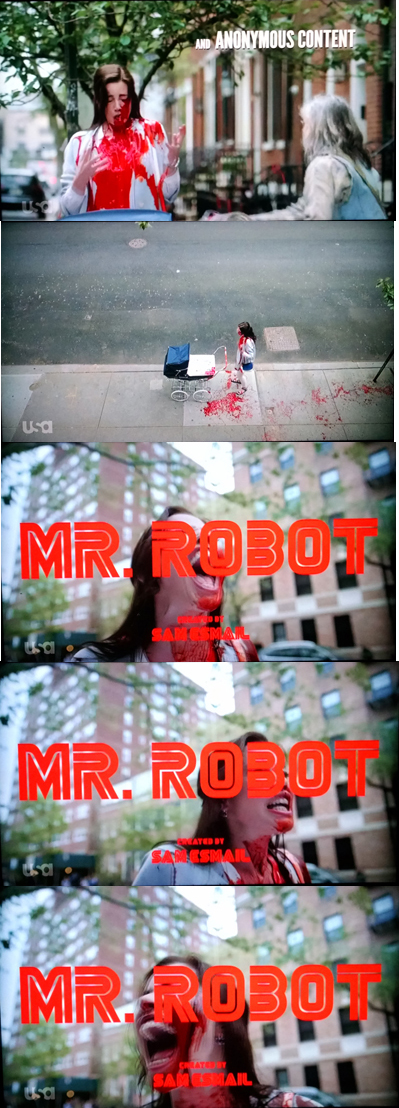
Updated: Friday, August 26, 2016 6:17 PM CDT
Post Comment | Permalink | Share This Post





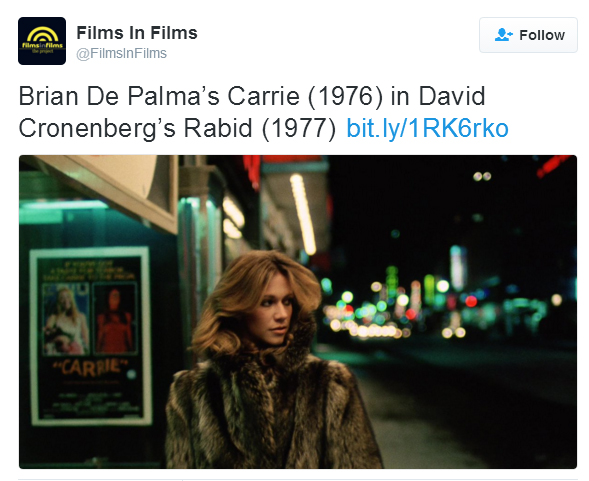

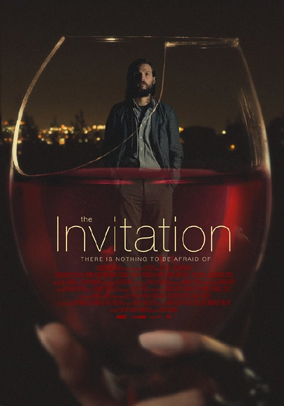
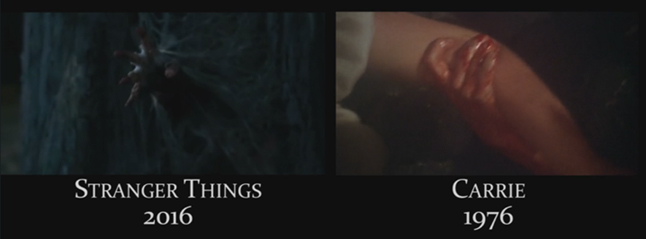
 Thanks to Patrick for translating the following passage for us, from the June 2016 issue of
Thanks to Patrick for translating the following passage for us, from the June 2016 issue of 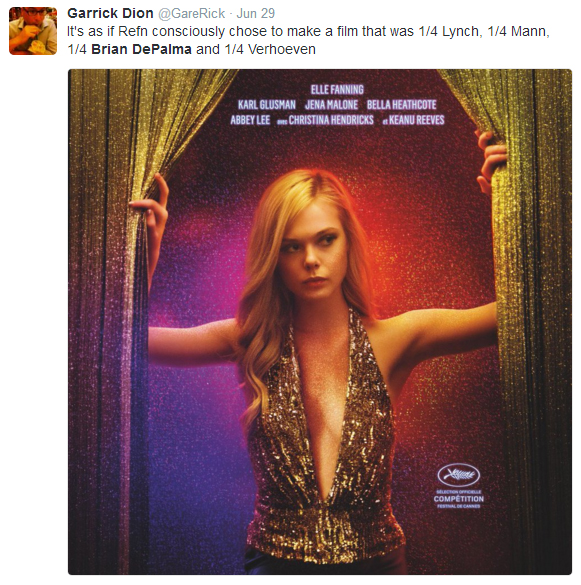
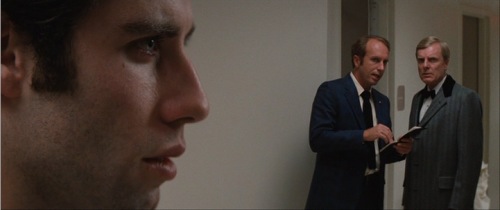
 Some of the films at Cannes the past week and a half have reminded critics of Brian De Palma, with Body Double mentioned specifically in regards to two of them. Here's a roundup:
Some of the films at Cannes the past week and a half have reminded critics of Brian De Palma, with Body Double mentioned specifically in regards to two of them. Here's a roundup:
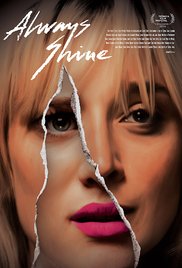 Sophia Takal's Always Shine (the followup to her 2011 debut, Green) had its world premiere at the Tribeca Film Festival last week. "The early reviews have been positive," states
Sophia Takal's Always Shine (the followup to her 2011 debut, Green) had its world premiere at the Tribeca Film Festival last week. "The early reviews have been positive," states